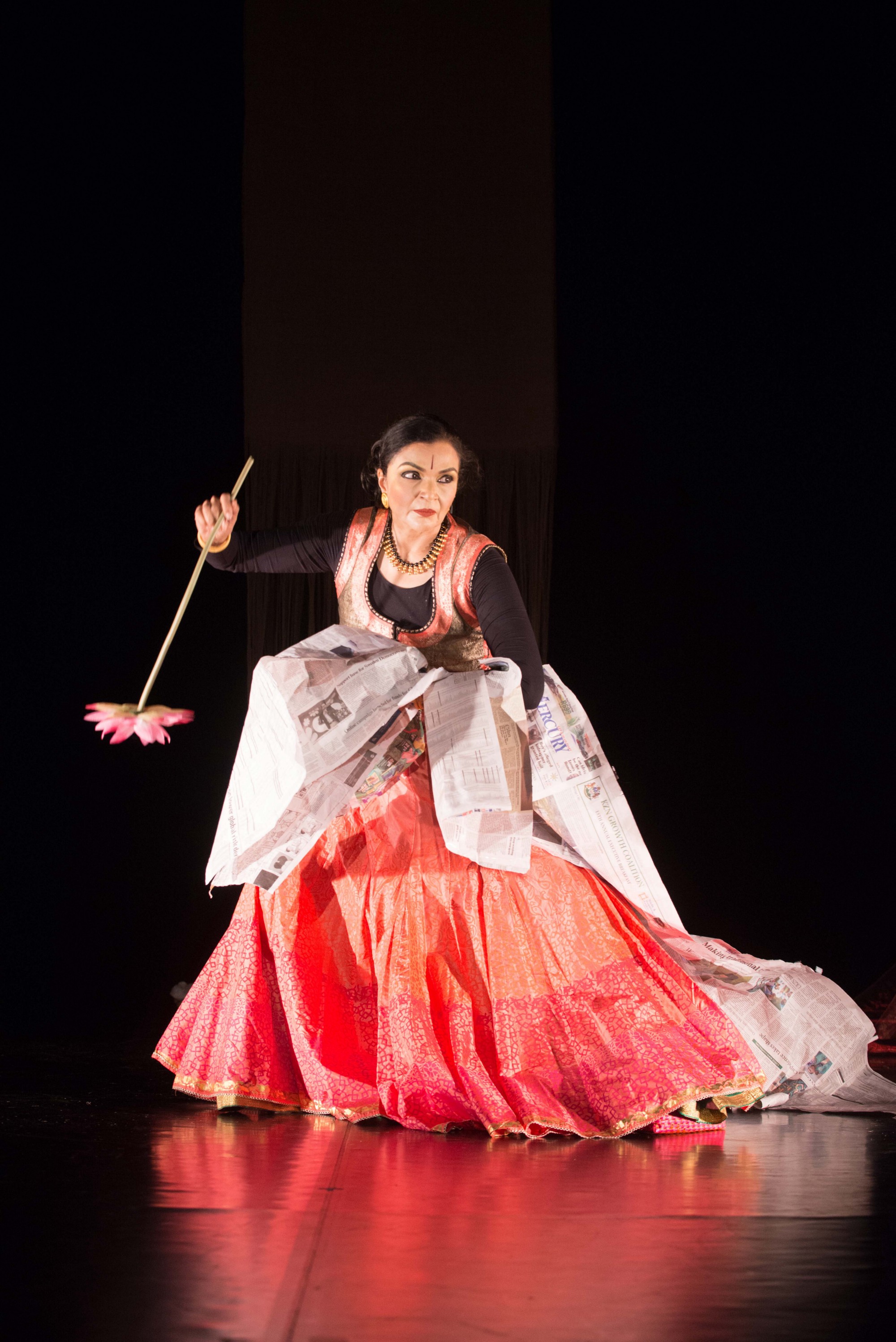*Note this review originally appeared on the JOMBA! Khuluma Blog, as part of the JOMBA! Contemporary Dance Experience Dance Writing Residency and is re-published with permission.
DURBAN, KZN, SOUTH AFRICA — I had just heard the news that Paul Taylor died as I left for the Sneddon Theatre to view Anita Ratnam’s “A Million Sitas,” the second program of the 2018 JOMBA! Contemporary Dance Experience. Taylor was 88, the last of the “moderns,” from a generation of dancemakers who pioneered what many would consider a wholly American art form. In his six-decade career, Taylor created 147 dances, the last of which, “Concertiana,” premiered just last March.
There’s plenty of debate about Taylor’s relevance today; he himself seemed to question this with the selection of Michael Novak as his successor in May, and the formation of the Paul Taylor American Modern Dance platform in 2014, which preserves historic American works including his own. The primary question surrounds the value of legacy and history — and the preservation thereof — weighed against the necessity and inevitability of art to evolve. American concert dance is a young legacy, particularly when compared with dance forms germane to Native Americans, or the traditions of India or Africa, and yet for me the loss of Taylor creates a sense of urgency around preserving his work, as the organizations of other “moderns” like Martha Graham or Merce Cunningham have done to varying degrees of success.
So I have to imagine that the weight of history is far greater for a dancemaker like Anita Ratnam, who calls Chennai home and is trained in classical Bharatanatyam, Mohiniattam and Kathakali dance, particularly when those traditions originated in the temple. And yet, even religion acknowledges that it must be current to survive, and contemporary interpretations of ancient texts and scriptures provide context so that people today can understand their lessons. In “A Million Sitas,” Ratnam reclaims the story of Princess Sita for women, telling the tale from a modern, feminist perspective.
Djembe and tabla, played by Mandla Matsha and Revash Dookhi, respectively, open the performance, a meeting of cultures and an immediate indication that this is no traditional Indian dance performance. Matsha and Dookhi are wholly under-utilized, given whole swaths of time to sit patiently as a recorded sound score by Anil Srinivasan, Vedanth Bharadwaj and Bindhu Malini plays for much of the evening. Vocalist Saranya Krishnan is similarly given quite a bit of idle time, although the presence of these musicians make the Sneddon’s stage feel less vast for Ratnam in this solo performance of her revised version of Sita.
As Ratnam enters, wearing a long, peach-hued skirt and bodice (by Sadhya Raman), she peers through a narrow fabric drape hung at center stage. There are three of these drops — in olive, khaki and red — each designating a separate little world for a portion of Sita’s tale. Ratnam carries a lotus flower, which matches a few others scattered down stage right near the musicians’ feet, using it and other props periodically (in addition to chanted rhythms, storytelling, mudras and steps recognizable from Bharatanatyam and T’ai Chi) to illustrate the legend.
I wasn’t quite with her until Ratnam broke away from her own story — a “freeze” a la Zack Morris in “Saved by the Bell” in which she looks us straight in the eye and explains some of the more misguided (at best, misogynistic at worst) interpretations of Sita.
It was here that the work grabbed me. Ratnam gave me an “in,” permission for Sita’s story to be my story, as much as anyone else’s. So in the same way that “West Side Story” and “Pride and Prejudice and Zombies” (don’t knock it ’til you’ve tried it) re-contextualize Shakespeare and Austin for a modern audience, Ratnam’s “Million Sitas” aims to render a “timeless tale” actually timeless, locating the lessons of Sita in an era of increasing intolerance for the devaluation of women.
Ratnam talks of how mothers recite the tale of Sita to their daughters, in the hopes that they’ll grow up and find husbands like hers — that’s Rama, who honestly sounds like a pretty miserable guy. Ratnam’s props and discarded costume items, which changed as she personified all the characters in her story, are strewn about the stage, leaving an allegorical residue behind her. Near the end, she opens a book that turns into an illuminated lotus flower and casts an incandescent glow on her expressive face — which through the evening showed every emotion but one: that of a coy, demure, abiding woman. She invokes words that resonate loudly in my country, “free at last,” as a signal that legends and gods may provide the blueprint, but we are the architects of our lives, and our stories.
“A Million Sitas” tours to Chicagoland Sept. 29, for one night at Dominican University. For more information, visit natya.com.
Header photo: “A Million Sitas” by Anita Ratnam. Photography by Val Adamson
